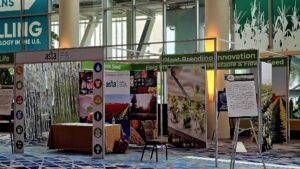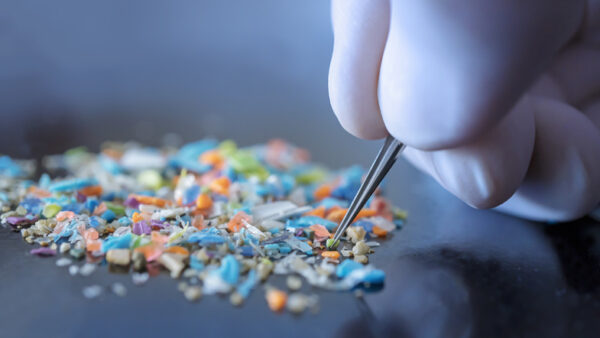Editor’s note: At ASTA’s Field Crop Seed Convention in December, we hosted three live panel discussions with some of the industry’s top thought leaders. All three discussions were fascinating, invigorating and inspiring. Though our panellists in our ‘Advocating for Action’ panel represented very different parts of the industry (an association, a large public company, and an innovation start-up), they have very similar perspectives on how the seed industry can effectively get its story heard. Read on: this should be mandatory reading for the entire seed value chain.
Telling the seed industry’s incredible story so others will listen.
In ways both small and giant, the seed industry is front and center on solving many of the world’s biggest challenges. Yet, the seed industry doesn’t always do an excellent job of connecting our story to the needs of society. In fact, the seed industry story that consumers, policymakers, job seekers, and the general public hear is often heavily shaped by outside voices.
If the seed industry wants the license to operate — the ability to use the kinds of innovations and draw the kind of people it needs to be effective — it needs to better showcase the public good, from local to global, that it does every day.
At the American Seed Trade Association’s Field Crop Seed Convention held in December 2023 in Orlando, Florida, Seed World hosted a live panel discussion about how we as individuals, companies, associations, and the collective seed industry can build more influence, meaningfully leverage advocacy, and more effectively share the seed industry story.
Joining moderator and Seed World Group director of content Madeleine Baerg were Marc Cool, global seed policy lead at Corteva Agriscience; Ian Miller, chief development officer of Pairwise and Sarah Wilbanks, CEO of the Association of Official Seed Certifying Agencies (AOSCA).
As the head of an industry association, Wilbanks’ role substantially differs from leadership positions in private or publicly held companies. Yet, she says, her messaging priorities — in fact, everyone in the seed industry’s messaging priorities — are the same.
As an industry, “we’re very good at doing what we’re doing, but we’ve not done a good job of telling people about it,” she said. “We all have that same responsibility [of] trying to change the narrative from something where people are getting misinformation online or in other avenues … shifting that to something that’s a positive and true, accurate statement.”
The panelists agreed the good news is that the seed industry is moving in a positive direction in terms of telling its story, becoming much more proactive and cohesive in its messaging. That hasn’t always been the case, however, so the industry is still playing a game of catch-up.
The discussion around biotech is a great example of where the seed industry needs to make up for earlier messaging missteps.
“One of our theories is that, unfortunately, biotech ended up with a little bit of a bad name because we felt like it didn’t make as direct a benefit to the consumer. It certainly benefits other parts of the chain, but that indirect benefit wasn’t made clear enough for the consumer,” Miller said.
“We forgot as an industry to explain the benefits of that technology,” Cool agreed. “So now what we’re saying is: we will be transparent about what we’re doing, knowing that not everyone will agree, but that’s okay because we’re having a conversation. The conversation then highlights and clarifies what everyone believes in and then we can work towards those common beliefs.”
That shift towards openness and positive, benefits-based messaging is under way across the seed industry.
“I sense a very positive, good, necessary shift,” Cool said. “Rather than us as an industry in the food production system defending the technologies we use… we need to shift towards: so what are the benefits? What is the product that you’re developing that you can actually eat and that pleases you and that gives you as a human nourishment and pleasure and all the other factors that you’re looking for? I think that shift is happening, [moving] from defending technology to talking about how technology enables the delivery of value and benefits to humankind. And that to me is an exciting time.”
Miller’s company is an industry innovator that uses new breeding technologies, including CRISPR, to create better tasting, more convenient produce, ultimately with the mission of promoting healthier eating habits via increasing the consumption of fruits and vegetables. Pairwise recently launched a line of salad greens called Conscious Greens: a blend that includes mustard greens that have been genetically engineered to remove their horse radish flavor, while retaining all of that crop’s nutritional benefits.
“Food is a very emotional experience for people. We think if we can make a connection with people, we can really ease adoption of this technology,” Miller said.
His team recently took their greens to three different events in three cities. Over the visits, they explained how the greens were made, served 6,000 portions, then collected surveys back from about half of the taste-testers.
“What we got [from the surveys] was a very high willingness to buy it. Less than 1% said anything about the technology, and [we] specifically asked about that,” Miller said. “So to me, that speaks to the power of connection, because it’s not a narrative we were driving… We’ve made that connection with those consumers, and they’ve accepted it for what it is — providing them benefit.”
His take-away message to the rest of the seed industry? Be authentic and transparent, always lead with the benefits to the end user, and focus on authentic connection.
While in-person connection will always carry the most weight, social media offers an opportunity to simultaneously connect with both individuals and the masses. Social media is arguably the ‘lowest hanging fruit’ communications opportunity for the seed industry. Yet, it’s an avenue agriculture as a whole has not widely embraced.
“Fourty or 50% of the American population gets all their news off of their social media feed. That’s quite concerning,” Wilbanks said. “But it really goes to show you if we don’t meet people in those mechanisms and at those levels, we’re really just not going to get as advanced with [where we need to go]… We all somehow in our business models need to put some pieces of that puzzle together to help the overall mission.”
Though almost anyone in the seed industry would agree it’s critical to build the seed industry voice, it’s very easy to slip into thinking that it’s someone else’s responsibility to carry that weight. The panelists agreed the responsibility lands on each and every person in the industry.
“I think we all have an obligation to engage in these conversations,” Miller said. “We all have different stories to tell… and I think [those stories coming from multiple sources] can be mutually reinforcing between different folks in the industry.”
“We need to understand that the conversation we’re having with greater society is a never-ending dialogue,” Cool said. “We’re never going to reach a conclusion where society gives us a certificate that we can put on the wall that says: ‘Okay, you have freedom to operate. We trust your technology. It’s good.’ That discussion is ever-evolving, ever-ongoing. This is a good thing, because it helps us continue to connect with the needs of society and understand how we deliver on those needs. So, the strategy we have is to open ourselves up to have that discussion knowing that the discussion doesn’t result in a really nice black and white, yes or no.”
Investing in telling the industry’s story does not require a complete business overhaul or grand investment. Rather, it requires an acknowledgement of the vital importance of communication, and a small investment of everyone’s time.
“Take 1% of your time and your staff’s time in 2024 and try to really push out the messaging … to tell your story,” Wilbanks said. “We’re all very, very busy. But if you put that in your strategic initiatives for the year and you really make that a priority — if we all did that — what kind of messaging and what kind of impacts could we make?”
Huge thanks to Cool, Miller and Wilbanks for making time to participate in Seed World’s panel. The entire panel discussion is available for viewing on the Seed World U.S. website.












